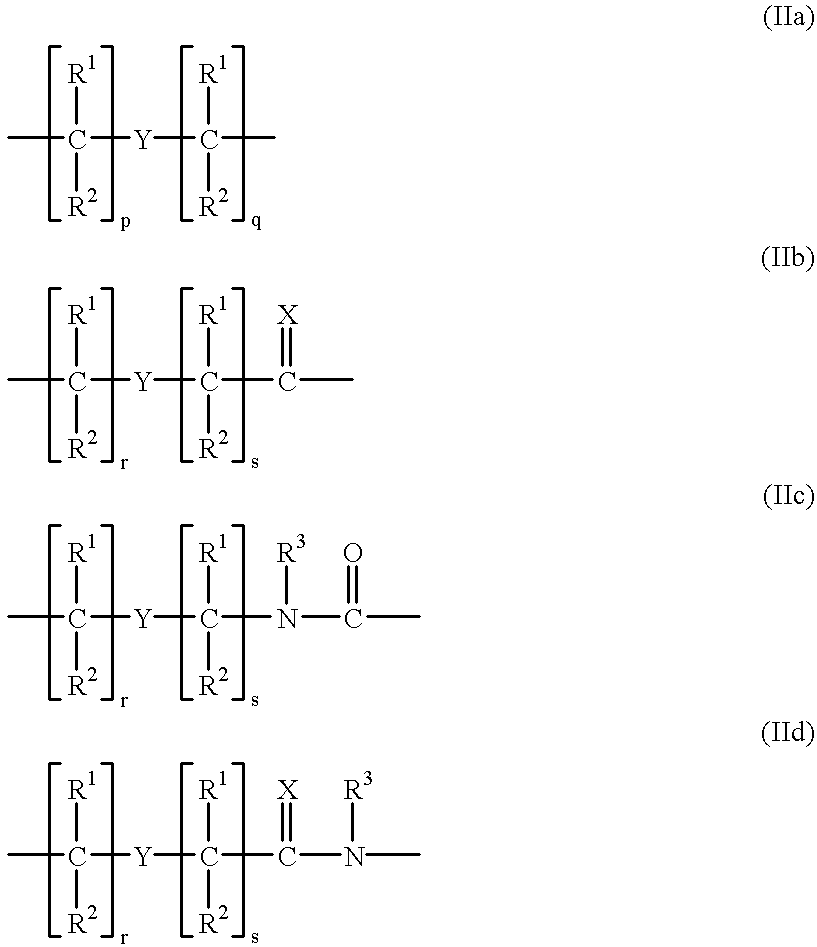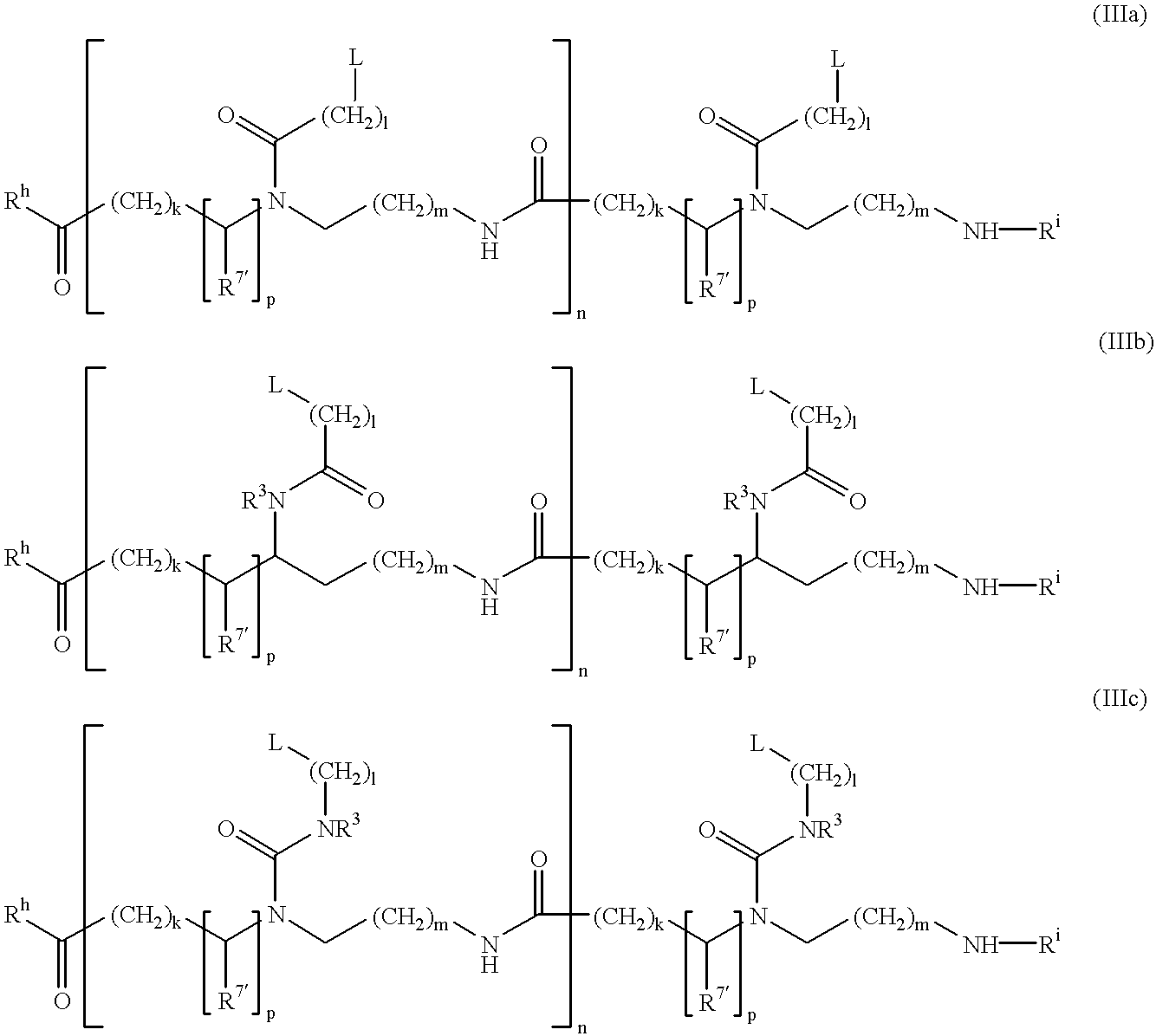PNA-DNA-PNA chimeric macromolecules
a chimeric macromolecule and chimeric technology, applied in the field of chimeric macromolecules, can solve the problems of detrimental nuclease degradation and unsatisfactory protein formation, and achieve the effects of increasing binding and specificity, reducing the number of chimeric chimeric chimeric chimeric chimeric chimeric chimeric chimeric chimeric chimeric chimeric chimeric chimeric chimeric chimeric chimeric chimeri
- Summary
- Abstract
- Description
- Claims
- Application Information
AI Technical Summary
Benefits of technology
Problems solved by technology
Method used
Image
Examples
example 1
Oligonucleotide synthesis:
Oligonucleotide portions of the macromolecules of the invention are synthesized on an automated DNA synthesizer (Applied Biosystems model 380B) using standard phosphoramidate chemistry with oxidation by iodine. For phosphorothioate oligonucleotides, the standard oxidation bottle is replaced by 0.2 M solution of 3H-1,2-benzodithiole-3-one 1,1-dioxide in acetonitrile for the step wise thiation of the phosphite linkages. The thiation wait step was increased to 68 sec and was followed by the capping step. Unless otherwise indicated, after cleavage from the CPG column and deblocking in concentrated ammonium hydroxide at 55.degree. C. (18 hr), the oligonucleotides are purified by precipitation twice out of 0.5 M NaCl solution with 2.5 volumes ethanol. Analytical gel electrophoresis is effected in 20% acrylamide, 8 M urea, 454 mM Tris-borate buffer, pH=7.0. Phosphodiester and phosphorothioate oligonucleotides are judged from polyacrylamide gel electrophoresis as t...
example 2
Low Load t-butyloxycarbonylglycyl Merrifield resin
Hydroxymethyl polystyrene resin (1 g, 650 micromoles hydroxyl / g) was placed in a solid-phase peptide synthesis vessel and washed sequentially (1 minute shaking for each wash) with dichloromethane (DCM, 2 times 10 mL), N,N-dimethylformamide (DMF, 2 times 10 mL), and acetonitrile (2 times 40 mL). To a round-bottom flask was added N-t-butyloxycarbonylglycine (701 mg, 4 mmoles) and O-(benzotriazol-1-yl)-1,1,3,3-tetramethyluronium tetrafluoroborate (1.156 g, 3.6 mmoles). Anhydrous acetonitrile (40 mL) was added to the vial followed by N,N-diisopropylethylamine (1.392 mL, 8 mmoles). The flask was shaken until all solids were dissolved. After one minute the contents of the vial were added to the peptide synthesis vessel and shaken for 125 minutes. The reaction solution was then drained away and the support washed with acetonitrile (1 times 40 mL), pyridine (2 times 40 mL) and DMF (2 times 40 mL). A solution of 10% (v / v) acetic anhydride in ...
example 3
5'-Hydroxy-T(3'-carboxy)-T(p)-C.sup.z (p)-A.sup.z (p)-G.sup.z (p)-Gly-O-Resin
t-Butyloxycarbonylglycyl Merrifield resin (200 mg, 10 microequivalents, example 1) is placed in a solid-phase peptide synthesis vessel. The support is washed with 50% DMF / DCM (4 times 5 mL) and then treated twice with 5% m-cresol in trifluoroacetic acid (4 mL) with shaking for two minutes each time. The support is washed again with 50% DMF / DCM (4 times 5 mL) and then with pyridine (5 times 5 mL). To a vial are added N.sup.2 -benzyloxycarbonyl-1- (t-butyloxycarbonyl-aminoethylglycyl) guanine (80 micromoles) and O-(benzotriazol-1-yl)-1,1,3,3-tetramethyluronium tetrafluoroborate (72 micromoles). N,N-Dimethylformamide (0.4 mL) and pyridine (0.4 mL) are added to the vial followed by N,N-diisopropylethylamine (160 micromoles). The vial is shaken until all solids are dissolved. After one minute the contents of the vial are added to the peptide synthesis vessel and shaken for 20 minutes. The reaction solution is th...
PUM
| Property | Measurement | Unit |
|---|---|---|
| Tm | aaaaa | aaaaa |
| Tm | aaaaa | aaaaa |
| Tm | aaaaa | aaaaa |
Abstract
Description
Claims
Application Information
 Login to View More
Login to View More - R&D
- Intellectual Property
- Life Sciences
- Materials
- Tech Scout
- Unparalleled Data Quality
- Higher Quality Content
- 60% Fewer Hallucinations
Browse by: Latest US Patents, China's latest patents, Technical Efficacy Thesaurus, Application Domain, Technology Topic, Popular Technical Reports.
© 2025 PatSnap. All rights reserved.Legal|Privacy policy|Modern Slavery Act Transparency Statement|Sitemap|About US| Contact US: help@patsnap.com



